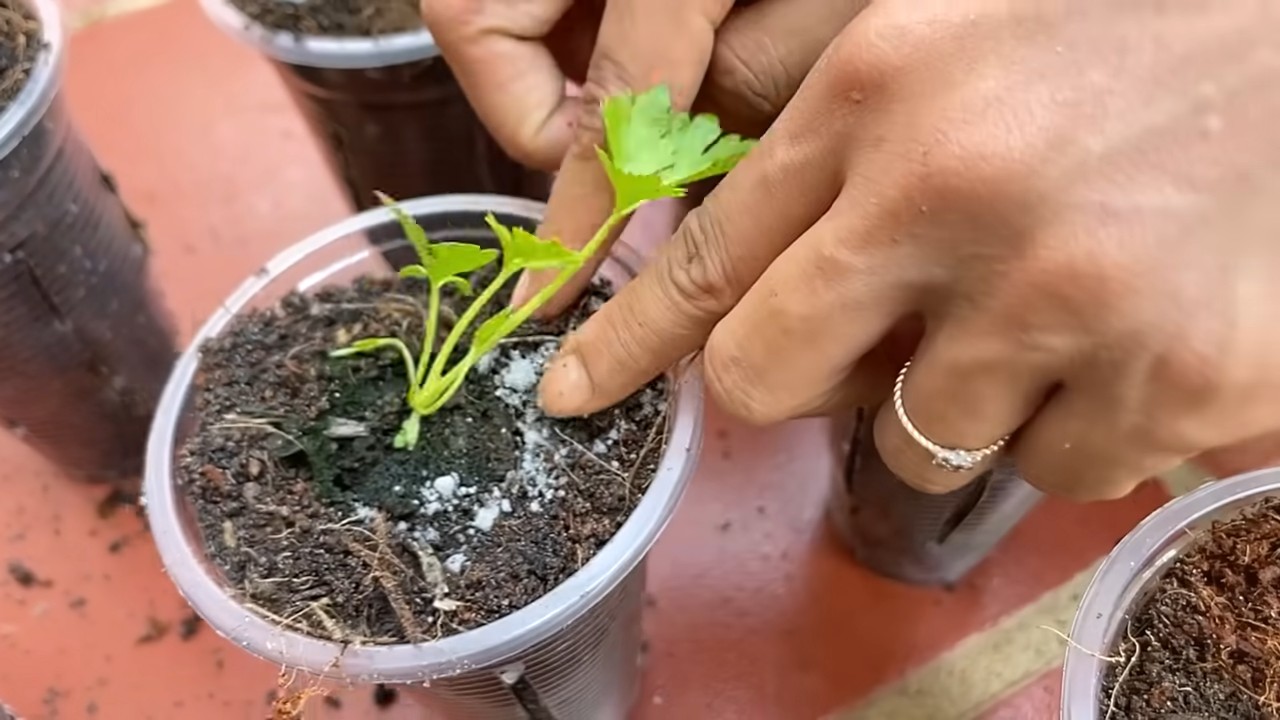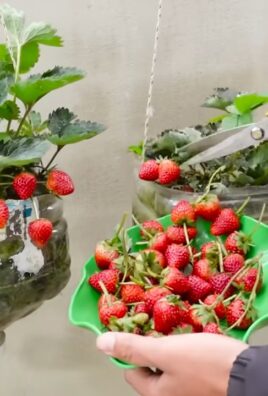Waterless celery storage: Ever bought a bunch of celery, only to find it limp and sad in your crisper drawer a few days later? I know I have! It’s a frustrating waste of money and perfectly good veggies. But what if I told you there’s a super simple, almost magical way to keep your celery crisp and fresh for weeks, all without using any water?
Celery has been cultivated for centuries, with evidence suggesting its use dating back to ancient Greece and Rome, where it was valued for its medicinal properties. While we might not be using it for healing potions today, its crisp texture and refreshing flavor make it a staple in salads, soups, and snacks. But its short shelf life can be a real pain.
That’s where this DIY trick comes in! We all want to reduce food waste, save money, and enjoy fresh, healthy ingredients. This waterless celery storage method is a game-changer. Forget soggy, wilted celery. With just a few simple steps, you can extend its freshness and enjoy crunchy celery whenever you need it. Let’s dive in and learn how to keep your celery crisp and delicious for weeks!

DIY Waterless Celery Storage: Keep Your Celery Crisp for Weeks!
Hey everyone! I’m so excited to share this game-changing kitchen hack with you. If you’re like me, you’re tired of buying celery only to have it turn limp and sad in the crisper drawer after just a few days. This waterless storage method will keep your celery crisp and fresh for weeks, saving you money and reducing food waste. Let’s get started!
What You’ll Need:
* Celery stalks
* Aluminum foil
* Airtight container or large zip-top bag (gallon size or larger)
* Sharp knife (optional, for trimming)
Why This Works: The Science Behind the Crispness
Before we dive into the steps, let’s quickly understand why this method is so effective. Celery wilts because it loses moisture. The aluminum foil acts as a barrier, preventing the celery from releasing its moisture into the surrounding air. The airtight container or bag further helps to maintain a stable environment, preventing the celery from drying out or absorbing unwanted odors from the refrigerator. Unlike storing celery in water, this method avoids the celery becoming waterlogged and losing its crisp texture.
Step-by-Step Instructions: The Foil-Wrapped Freshness
1. Prepare the Celery: First, take your celery stalks and give them a good rinse under cold water. Gently scrub away any dirt or debris.
2. Dry Thoroughly: This is a crucial step! Excess moisture is the enemy. Use a clean kitchen towel or paper towels to thoroughly dry each celery stalk. Make sure to get into all the crevices. I usually let them air dry for a few minutes after toweling them off just to be extra sure.
3. Trim the Ends (Optional): If the ends of your celery stalks look a little dry or brown, trim them off with a sharp knife. This helps prevent the browning from spreading. I usually trim off about half an inch.
4. Wrap in Aluminum Foil: Now for the magic! Take a large sheet of aluminum foil – enough to completely wrap the celery stalk. Place the celery stalk in the center of the foil and tightly wrap it, making sure to cover the entire stalk. You want to create a sealed package. I like to fold the ends of the foil over to further secure the wrapping. Repeat this process for each celery stalk.
5. Store in an Airtight Container or Bag: Place the foil-wrapped celery stalks in an airtight container or a large zip-top bag. If using a zip-top bag, squeeze out as much air as possible before sealing it.
6. Refrigerate: Store the container or bag in the crisper drawer of your refrigerator.
Troubleshooting and Tips for Success
* Don’t Skip the Drying Step: I can’t stress this enough! If your celery is wet when you wrap it, it will likely become slimy and spoil faster.
* Use Heavy-Duty Foil: While regular aluminum foil will work, heavy-duty foil is less likely to tear and provides a better barrier against moisture loss.
* Check Periodically: Every week or so, check your celery to make sure it’s still in good condition. If you notice any signs of spoilage (like sliminess or a bad odor), discard the affected stalks.
* Rewrap if Necessary: If you use some of the celery, rewrap the remaining stalks in fresh aluminum foil to maintain their freshness.
* Consider Pre-Cutting: If you know you’ll be using the celery in a specific way (like for snacking or in salads), you can pre-cut it into sticks before wrapping it in foil. This will save you time later. Just make sure the cut pieces are also thoroughly dried before wrapping.
* Don’t Overcrowd: Make sure the celery stalks have enough space in the container or bag. Overcrowding can restrict airflow and lead to spoilage.
* Experiment with Different Containers: I’ve found that some airtight containers work better than others. Experiment with different types to see what works best for you. Glass containers are a great option as they don’t absorb odors.
* Avoid Storing Near Ethylene-Producing Fruits: Ethylene gas, produced by fruits like apples and bananas, can accelerate the ripening and spoilage of vegetables. Avoid storing your celery near these fruits.
* Celery Still Limp? Try This: If your celery is *slightly* limp but not spoiled, you can try reviving it by placing it in a bowl of ice water for about 30 minutes. This will help it rehydrate and regain some of its crispness. However, this is only a temporary fix, and the celery should be used soon after.
* Foil Alternatives (Less Effective): While aluminum foil is the most effective material for this method, you can try using beeswax wraps or reusable silicone food wraps as an alternative. However, these options may not provide as good of a moisture barrier, and your celery may not stay fresh for as long.
* Consider the Source: The freshness of the celery when you buy it will also affect how long it lasts. Choose celery that is firm, crisp, and has bright green leaves. Avoid celery that is already wilted or has brown spots.
* Wash Only What You Need: If you’re not planning on using all of the celery at once, only wash the stalks that you need. Washing the entire bunch can introduce moisture and accelerate spoilage.
* Use a Vegetable Brush: For really dirty celery, use a vegetable brush to gently scrub away any stubborn dirt or debris.
* Don’t Store with Other Vegetables: While the airtight container helps, it’s best to store celery separately from other vegetables in the crisper drawer to prevent cross-contamination of odors and potential spoilage.
* Label the Container: It’s a good idea to label the container or bag with the date you stored the celery so you can keep track of how long it’s been in the refrigerator.
* Compost Spoiled Celery: If your celery does spoil, don’t throw it away! Compost it instead. Celery is a great addition to compost piles and will help enrich your garden soil.
Why I Love This Method
I’ve been using this method for years, and it’s completely transformed the way I buy and store celery. I used to throw away so much celery because it would go bad before I could use it. Now, I can buy a whole bunch of celery and know that it will stay fresh for weeks, allowing me to use it in soups, salads, snacks, and more. It’s a simple, effective, and eco-friendly way to reduce food waste and save money. Plus, it’s so satisfying to have crisp, fresh celery on hand whenever I need it!
I hope you found this DIY hack helpful! Give it a try and let me know how it works for you. Happy celery storing!

Conclusion
So, there you have it! This simple, waterless celery storage trick is more than just a way to keep your celery crisp; it’s a game-changer for reducing food waste, saving money, and ensuring you always have fresh, crunchy celery ready for snacks, soups, salads, or whatever culinary adventure awaits. Forget soggy, limp stalks that end up in the compost bin. This method extends the life of your celery significantly, allowing you to enjoy its vibrant flavor and satisfying crunch for weeks longer than traditional storage methods.
Why is this a must-try? Because it’s incredibly easy, requires minimal effort, and utilizes materials you likely already have in your kitchen. No special containers or complicated procedures are needed. Just a clean container, a paper towel, and your celery. The results speak for themselves: crisp, fresh celery that’s ready to use whenever you need it.
But don’t stop there! Feel free to experiment with variations to find what works best for you. For example, if you find that your celery is particularly prone to drying out, you can lightly dampen the paper towel before wrapping the celery. Alternatively, if you live in a humid climate, you might want to change the paper towel more frequently to prevent excess moisture buildup. You can also try using a reusable cloth wrap instead of a paper towel for a more eco-friendly approach. Some people have even had success using beeswax wraps. The key is to find the balance that keeps your celery hydrated without becoming waterlogged.
Another variation to consider is the type of container you use. While a plastic container with a lid works perfectly well, you can also use a reusable silicone bag or even a large glass jar. The important thing is that the container is airtight to prevent the celery from drying out.
Beyond just celery, this method can be adapted for other vegetables as well. Carrots, broccoli, and even leafy greens like lettuce can benefit from this waterless storage technique. The principle is the same: wrap the vegetable in a paper towel to absorb excess moisture and then store it in an airtight container in the refrigerator.
We are confident that once you try this waterless celery storage method, you’ll be amazed by the difference it makes. It’s a simple yet effective way to keep your celery fresh and crunchy for longer, reducing food waste and saving you money in the process.
So, what are you waiting for? Give it a try! We encourage you to experiment with different variations and find what works best for you. And most importantly, we want to hear about your experience! Share your tips, tricks, and results in the comments below. Let’s build a community of savvy home cooks who are committed to reducing food waste and enjoying fresh, delicious produce every day. Your insights could help others discover the magic of waterless celery storage and transform their own kitchens. Let us know if you have any questions, and happy storing!
Frequently Asked Questions (FAQ)
1. How long will celery last using this waterless storage method?
Typically, celery stored using this method can last for 2-4 weeks, sometimes even longer, depending on the initial freshness of the celery and the consistency of the refrigerator temperature. This is significantly longer than the 1-2 weeks you might get with traditional storage methods. The key is to monitor the celery and replace the paper towel if it becomes too damp.
2. What kind of container is best for waterless celery storage?
An airtight container is crucial. A plastic container with a tight-fitting lid works well. You can also use a reusable silicone bag or a large glass jar with a lid. The goal is to prevent the celery from drying out by minimizing air exposure. Make sure the container is clean and dry before storing the celery.
3. Can I use this method for cut celery sticks?
Yes, you can! This method works well for both whole celery stalks and pre-cut celery sticks. Simply wrap the cut celery sticks in a paper towel and store them in an airtight container. Be sure to check the paper towel more frequently, as cut celery tends to dry out faster than whole stalks.
4. What if my celery starts to get soft even with this method?
If your celery starts to soften, it could be due to a few factors. First, make sure the paper towel isn’t too damp, as excess moisture can promote spoilage. Second, check the temperature of your refrigerator. If it’s too warm, the celery will deteriorate faster. Finally, the initial freshness of the celery plays a role. If the celery was already starting to soften when you bought it, it won’t last as long. You can try reviving slightly softened celery by soaking it in ice water for about 30 minutes before storing it using this method.
5. Is it necessary to wash the celery before storing it?
It’s generally recommended to wash the celery before storing it, but make sure it’s completely dry before wrapping it in the paper towel. Excess moisture can lead to spoilage. You can wash the celery under cold running water and then pat it dry with a clean towel or use a salad spinner to remove excess water.
6. Can I use a reusable cloth wrap instead of a paper towel?
Yes, you can! A reusable cloth wrap is a great eco-friendly alternative to paper towels. Just make sure the cloth is clean and dry before wrapping the celery. You may need to change the cloth wrap more frequently than a paper towel, as it may not absorb as much moisture.
7. My celery is already limp. Can this method revive it?
This method is primarily for preserving the freshness of celery, not reviving it. However, you can try soaking the limp celery in ice water for about 30 minutes to an hour before storing it using this method. This can help to rehydrate the celery and make it crisper.
8. Does this method work for other vegetables besides celery?
Yes, this method can be adapted for other vegetables, such as carrots, broccoli, lettuce, and other leafy greens. The principle is the same: wrap the vegetable in a paper towel to absorb excess moisture and then store it in an airtight container in the refrigerator.
9. How often should I change the paper towel?
You should change the paper towel whenever it becomes damp or wet. This will help to prevent the celery from spoiling. The frequency will depend on the humidity in your refrigerator and the initial moisture content of the celery. Check the paper towel every few days and replace it as needed.
10. Is there any risk of bacteria growth with this method?
While this method helps to extend the life of celery, it’s important to practice good food safety habits. Always wash your hands before handling food, and make sure your containers and utensils are clean. If you notice any signs of spoilage, such as a slimy texture or an unusual odor, discard the celery immediately. Proper refrigeration and regular monitoring are key to preventing bacteria growth.
11. Can I store celery this way if I’ve already started cutting into it?
Yes, you can. If you’ve used part of the celery and want to store the remaining portion, simply wrap the cut end tightly with a paper towel before placing it in the container. This helps to prevent the cut end from drying out.
12. What if I don’t have an airtight container?
While an airtight container is ideal, you can still use this method with a regular container. Just make sure to wrap the celery tightly in the paper towel and place it in the container. You may need to change the paper towel more frequently, as the celery will be exposed to more air.
13. Does the type of celery (e.g., organic vs. conventional) affect how long it lasts with this method?
The type of celery can slightly affect its shelf life. Organic celery, which is grown without pesticides, may sometimes have a shorter shelf life than conventional celery. However, the waterless storage method can help to extend the life of both types of celery.
14. Can I freeze celery stored using this method?
While you can freeze celery, it’s important to note that freezing will change its texture. Frozen celery will become softer and less crisp when thawed. It’s best to use frozen celery in cooked dishes, such as soups and stews, rather than eating it raw. To freeze celery, wash and chop it into desired sizes, blanch it in boiling water for 2-3 minutes, then transfer it to an ice bath to stop the cooking process. Drain the celery well, pat it dry, and then freeze it in a single layer on a baking sheet. Once frozen, transfer the celery to a freezer bag or container.
15. What are the benefits of using waterless celery storage compared to storing it in water?
Storing celery in water can lead to waterlogging, which can make the celery mushy and accelerate spoilage. Waterless storage, on the other hand, allows the celery to breathe while still maintaining its moisture content. This helps to keep the celery crisp and fresh for longer. Additionally, waterless storage is less messy and requires less maintenance than storing celery in water.




Leave a Comment